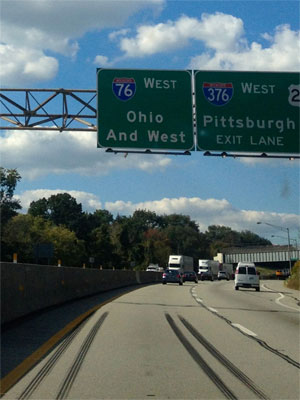Dead Milkmen Power
Published 11 years, 9 months pastI want to talk about last Saturday night, and it has nothing to do with Daylight Saving Time. Well, almost nothing, except very tangentially, right at the end.
First, a bit of back story: at the very first An Event Apart, way back at the end of 2005, one of the attendees introduced himself to me. I didn’t recognize his name, Dean Sabatino, at first, but then he told me his stage name: Dean Clean. As in, the drummer for The Dead Milkmen.
I may have squeeed a bit.
Later on, I was able to catch a show of theirs right before An Event Apart Chicago 2009 and meet the band. My hair was even properly rock-n-roll for the occasion. It was a great time. And then, this summer, Dean came with Kimberly Blessing to visit us while we were still in-patient at CHOP with Rebecca.
So when I found out The Dead Milkmen were headlining WCSB’s fifth annual Masquerade Ball, I knew I had to be there. I’ll admit that, on the actual day, I felt pretty tired and thought about staying home, but I sucked it up and pushed myself to the west side, because how often would I get a chance to see them in my hometown? And, more to the point, be able to give each band member a signed copy of CSS: The Definitive Guide, 3rd Edition in exchange for having them sign my old Dead Milkmen CDs? After all, three of the four of them are web designers and/or developers, and the fourth is getting back into the field.
I know, right?
So anyway, I went and got to hang out with the band backstage, in the small hallway endpoint that served as a dressing room. And there, I found out that Howard Kramer, who is Curatorial Director at the Rock Hall, lives a block away from us, and is the father of one of my daughter’s good friends, used to work with the Dead Milkmen back in the day. I found this out because he was there. I also found out that when Howard moved to Cleveland in the mid-1990s, he used to call in requests to my Big Band radio show. Howard in Cleveland Heights, who loved Louis Jordan. I remember!
Okay, so yet again we discover that the world is not so large as it seems. That by itself was enough to make the evening pretty memorable.
But then…
I helped the band get their gear to the stage (roadie time!) and watched them perform their final checks. I was standing offstage with Dean, telling him I’d probably duck out partway through the set — it was midnight by then — when all the lights went out and the crowd roared. Time for the big show! Except, no, it wasn’t that at all: the power had gone out.
Eventually, it was determined that the power wouldn’t be coming back for a while. So the Milkmen lined up at the front of the stage, Dean with just his snare and nobody with any amplification, and belted out five songs by cell phone and flashlight. Guitar solos were sung and the vocals backed by a rowdy chorus of audience members. After “Punk Rock Girl”, Rodney Anonymous jumped off the stage and walked through the audience to lead them onto the sidewalk, thus helping clear the still powerless hall.
I’ve never seen anything quite like it. How many bands would have said that without power, there was no way they could play? How many bands would have shrugged and said that the crowd situation wasn’t their problem? Instead, they hit the stage and gave everything they could to give the fans a show, however abbreviated, and to help bring the evening to a close without incident. Way beyond class, all the way.
With the hall mostly cleared, I shone my iPhone’s flash on Dean’s setup so he could pack up, and then helped the band load up their van. That’s when I heard a guy in the rigging call out, “WE HAVE A PROBLEM! That guy is having a seizure!”
That guy totally was having a seizure. I was the closest to him, so I ran over and slipped a foot under his head to keep it from being bashed against the floor as he convulsed. Someone else shouted they were calling 911. The rigging guy got there half a minute after I did and told us that his friend was epileptic and sometimes just went into seizure. I could tell he had done this before and knew how to guide his friend through the seizure, so I cleared the area to give them both space and went back to helping with the loadout, head spinning a little bit from the piled-up hyper-reality of it all.
With the van finally loaded up, I said good night to the band and headed home to get a few hours’ sleep. They, on the other hand, drove down to the WCSB studio to play a live show on-air, encore and all. That’s right, they played a full show anyway, in the wee hours of Sunday morning, time change and all.
The point of chronicling all of this is to serve up a reminder, both to me and to you, that it’s easy to decide you’re too tired or busy or whatever — we are geniuses at finding pretexts — and not get out there to experience life, in all its never-ending weirdness. When you have an opportunity, take it. You never know what might happen and who you might be able to help out.
